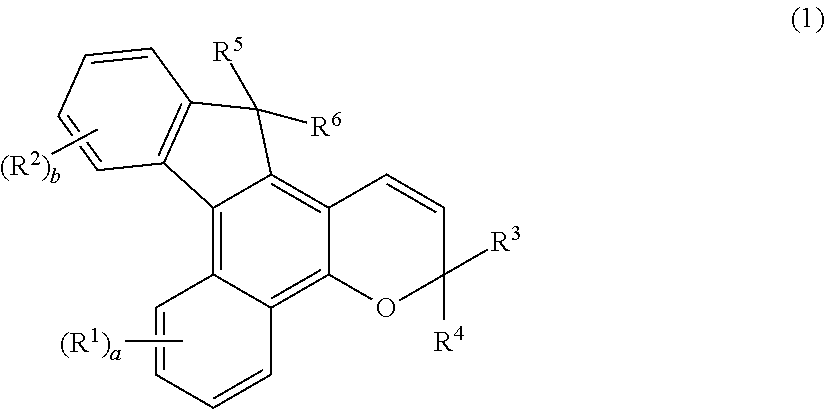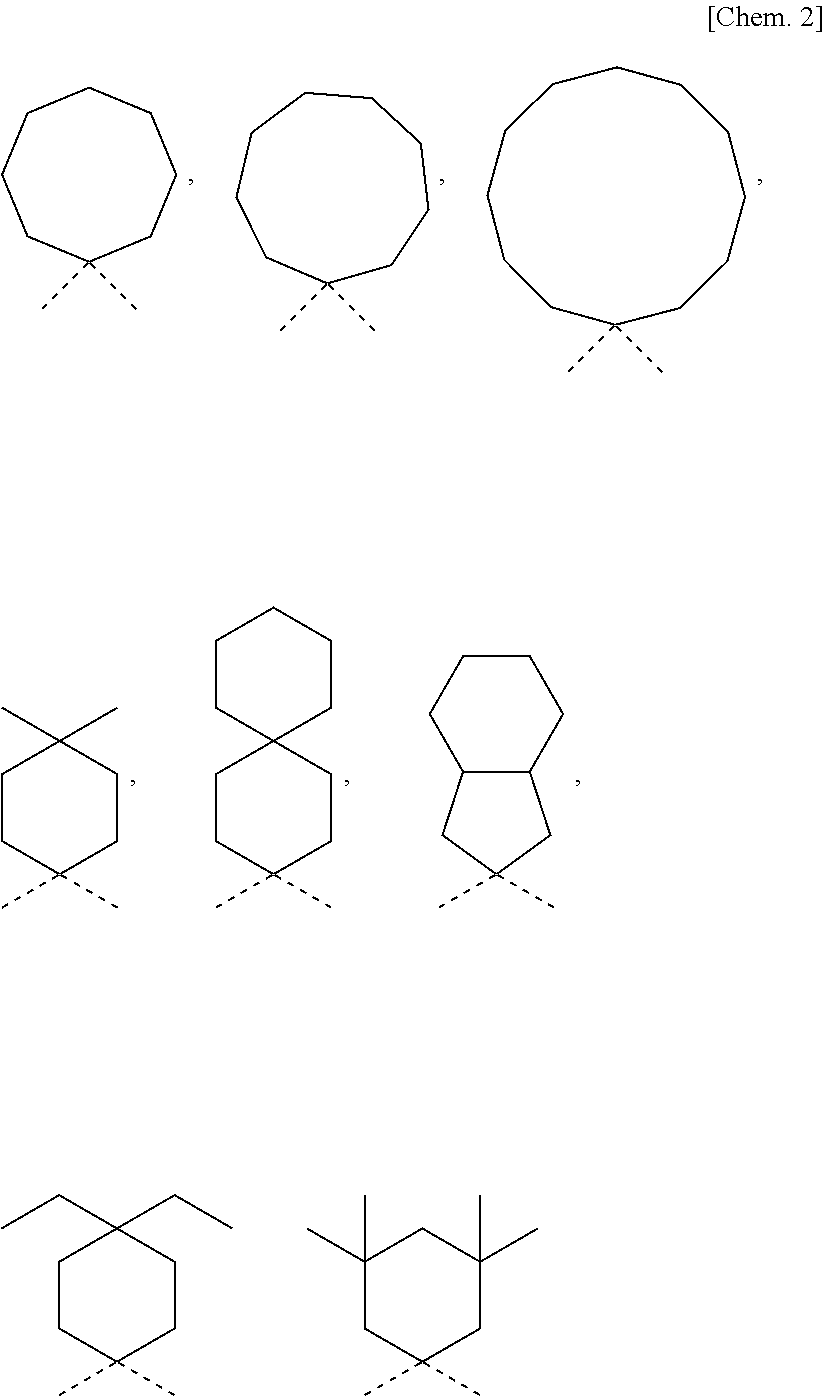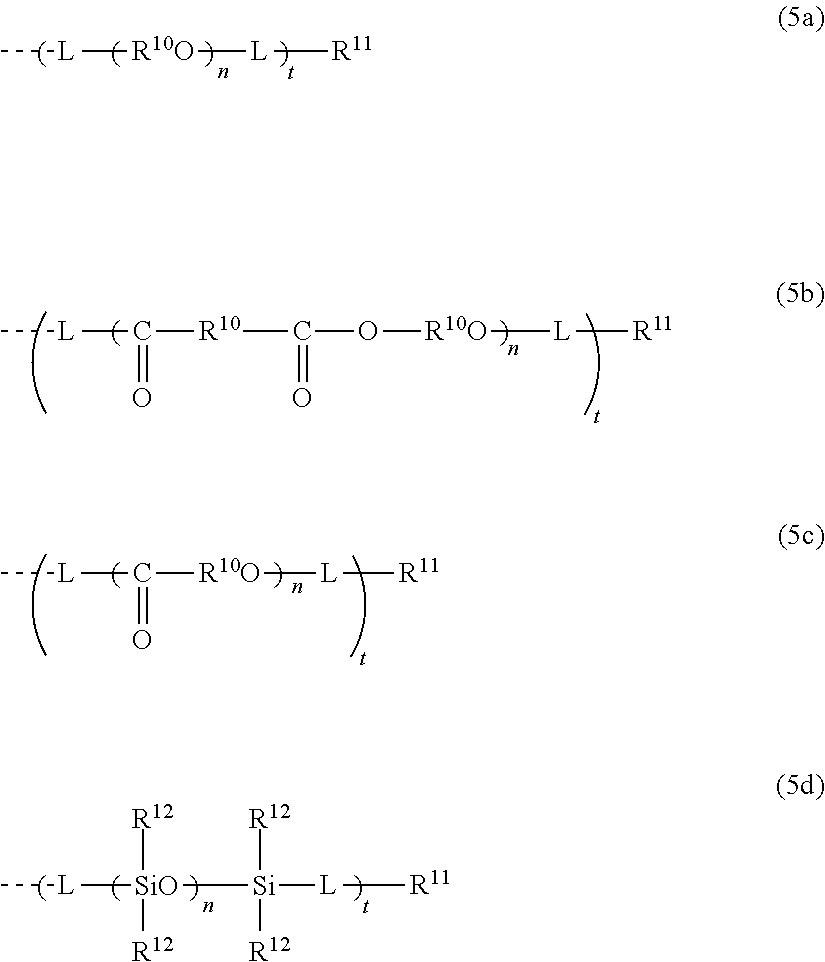Photochromic compound, curable composition containing said photochromic compound, and optical article
- Summary
- Abstract
- Description
- Claims
- Application Information
AI Technical Summary
Benefits of technology
Problems solved by technology
Method used
Image
Examples
examples
[0386]Next, the present invention is described in detail with reference to Examples and Comparative Examples, but the present invention is not limited to these Examples. First, measurement devices used in the present invention and production methods for components are described below.
examples 1 to 5 (
Synthesis of Photochromic Compound of the Invention)
example 1
First Step
[0387]Polyethylene glycol monooleyl ether (36.7 g, 100 mmol) having a number-average molecular weight of 357 and toluene sulfonyl chloride (21.0 g, 110 mmol) were dissolved in pyridine (400 mL) and stirred. 1,4-diazabicyclo[2.2.2]octane (2.2 g, 20 mmol) was dropwise added thereto, and stirred at room temperature for 12 hours. After the reaction, the reaction liquid was added to water with ice, and extracted using dichloromethane. The extracted organic layer was washed with 10% hydrochloric acid, then the solvent was evaporated away, and thus, a compound represented by the following formula (16):
[0388]was obtained.
Second Step
[0389]4-Hydroxybenzoic acid (6.2 g, 45 mmol) and potassium carbonate (18.7 g, 135 mmol) were dissolved in DMF (450 mL). With stirring, this was heated to have a liquid temperature of 80° C. Subsequently the compound (48.6 g, 95 mmol) of the formula (16) was dropwise added over 1 hour. After the dropwise addition, this was stirred at the liquid temperatu...
PUM
| Property | Measurement | Unit |
|---|---|---|
| Molar density | aaaaa | aaaaa |
| Molar density | aaaaa | aaaaa |
| Fraction | aaaaa | aaaaa |
Abstract
Description
Claims
Application Information
 Login to View More
Login to View More - R&D
- Intellectual Property
- Life Sciences
- Materials
- Tech Scout
- Unparalleled Data Quality
- Higher Quality Content
- 60% Fewer Hallucinations
Browse by: Latest US Patents, China's latest patents, Technical Efficacy Thesaurus, Application Domain, Technology Topic, Popular Technical Reports.
© 2025 PatSnap. All rights reserved.Legal|Privacy policy|Modern Slavery Act Transparency Statement|Sitemap|About US| Contact US: help@patsnap.com



